Tamilnadu and Kerala Tour Package | 17 Days and 16 nights



Including: Mahabalipuram, Kanchipuram, Auroville, Pondicherry, Chidambaram, Gangaikondacholapuram, Darasuram, Thanjavur, Trichy, Madurai, Thekkady, Munnar, Kumarakom Backwaters, Alleppey Backwaters, Kochi
Airports: Arrival Chennai, Departure Cochin
Day 1: Travel to Mahabalipuram after arrival at Chennai International airport
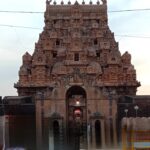

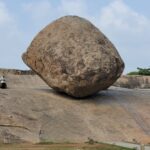
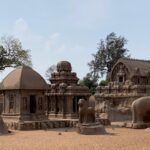
Your driver will pick you up from the airport and deliver you to your hotel in Mahabalipuram. The rest of the day is free for leisure activities. Mahabalipuram is located on the Bay of Bengal shore. The best beach in India’s east is regarded to be its magnificent beach. The palm trees and typical fishing boats add to the blue sea and sandy beach’s hue.
Spend the night in Mahabalipuram
Day 2: Kanchipuram and Mahabalipuram




Kanchipuram, often known as the “golden city of a thousand temples,” is one of India’s seven holiest cities according to Hinduism. After Varanasi, it is regarded as being the second holiest. Between the sixth and eighth centuries AD, it served as the capital city for illustrious Dravidian empires like the Pallavas, Cholas, and Vijayanagar. Out of the original 1000 temples, just about 70 remain intact. The Kailasanatha temple, a sandstone structure constructed in the early 7th century A.D., is the most well-known of them. Silk weaving is a specialty of the town of Kanchipuram, and visiting adjacent villages to observe the craftsmen at work is highly appealing.
Evening – Return move to Mahabalipuram
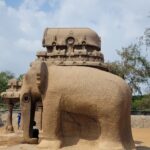

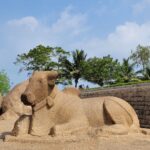
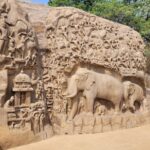
Mahalipuram’s collection of monuments is a UNESCO World Heritage Site. On a rocky outcrop between a beach and a lagoon, it is situated in a beautiful area. The complex, which was constructed by the Pallava kings in the seventh century, consists of 14 cave temples, 9 monolithic “Rathas,” 3 stone temples, and 2 relief-carved rock panels. The two rock panels, which together make up the largest bass relief in the world, provide graphic details of Arjun’s penance when he prayed for Shiva’s abilities. There is particular attention to the Shore Temple. It is constructed next to the river and features an unusual altar that faces east so that it may catch the dawn sun.
Spend the night in Mahabalipuram
Day 3: Travel to Auroville as well as Pondicherry
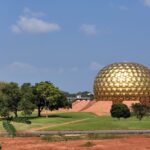
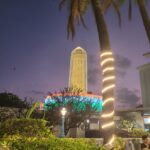
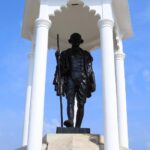
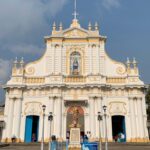
Up to 50,000 people from all over the world are expected to live in the universal township of Auroville, which is dedicated to an experiment in fostering human togetherness. In the 1930s, “The Mother,” Mirra Alfassa, was introduced to the idea of Auroville. She offers a blessing to the Sri Aurobindo Society of Pondicherry’s idea to establish such a township in the middle of the 1960s. The Indian government endorsed the idea, and in 1966 UNESCO unanimously approved a resolution praising Auroville as a project crucial to the advancement of humanity.
Today, Auroville is acknowledged as the first and only continuous experiment in human unity-in-diversity and consciousness evolution that has received international endorsement. It is interested in sustainable living and the long-term cultural, environmental, social, and spiritual requirements of humanity. It also does practical research in these areas.
Spend the night in Pondicherry.
Day 4: Full day in Pondicherry
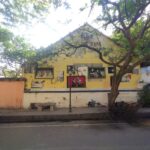

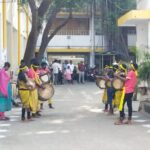
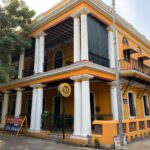
François Martin, the first director of the French East India Company, founded Pondicherry in 1674, the former capital of the French colonies in India. The town is organized on a grid, with parallel streets intersecting at right angles. Elegant colonial mansions, tree-lined boulevards, parks, bars, and cafes may all be found in the French Quarter. Its principal promenade, the 3 km long Goubert Salai that runs alongside the Bay of Bengal, makes for a cool nighttime stroll or daytime stroll. A canal that originally divided the French Quarter from the Tamil section of the city, where the locals used to reside, is now dry. Manakula Vinayagar Temple is a well-known destination for tourists and pilgrims.
Spend the night in Pondicherry.
Day 5: Travel to Thanjavur en route visit Chidambaram, Gangaikondacholapuram, Darasuram.
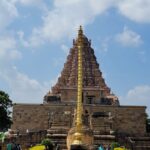
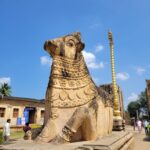
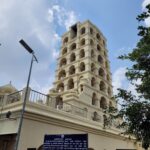
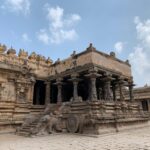
Visit Chidambaram, Gangaikondacholapuram and Darasuram along the way.
In the center of Chidambaram, a town known for its temples sits the Hindu shrine, Chidambaram Temple. One of the most well-known depictions of Lord Shiva performing his sacred dance (the “nadanta”) is the Nataraja, the “Cosmic Dancer,” whose spectacular gopurams, themselves are examples of Dravidian architecture, provide access to the sanctuary. The town of the Chola who brought Ganga (water from Ganga) or who vanquished (the rulers near) Ganga” is what Gangaikondacholapuram implies.
The city was built in the eleventh century to serve as the seat of the mighty Chola Dynasty, but it is now just a little village. The temple is a UNESCO World Heritage site renowned for its brilliant architecture and profusion of sculptures. Shiva, who is referred to in this region as the “Lord of Airavata,” is honored at the Airavateshvara Temple in Darasuram. According to legend, after worshipping Shiva here, Airavata, the white elephant of Indra, the deity of the skies, regained his color. The temple is a piece of world heritage listed by UNESCO.
Spend the night in Thanjavur
Day 6: Full day in Thanjavur
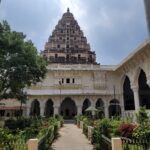


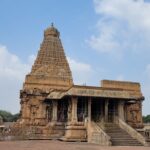
Visits to the Maratha Palace, Brihadeshwara Temple, and other locations are planned for today in Thanjavur.
The Chola rulers, whose ancestors date back to the beginning of the Christian period and who founded their kingdom between AD850 and 1270, had Thanjavur as their historic capital. They ruled the majority of the Indian peninsula, including sections of Sri Lanka and, for a brief period, the Srivijaya Kingdom of the Malay peninsula and Sumatra, at their zenith of strength. The Brihadeshwara Temple was built by Raja Raja (985–1014), one of the finest Chola rulers, and his son Rajendra I (1014–1044), whose navy fought the Arabs for control of the Indian Ocean trade routes.
The Cholas also contributed to the massive temple complex at Srirangam in Thiruchirappalli and built the temples at Thiruvaiyaru, Gangakondacholapuram, and Darasuram (Trichy). One of India’s largest temples and one of its most cherished architectural landmarks, the Brihadeshwara Temple is a UNESCO World Heritage site. You might catch a glimpse of an elephant blessing ritual. The huge Maratha Palace was created by the Nayaks and improved by the Marathas. A museum, an art gallery, and a manuscript library are all located within the royal complex.
Spend the night in Thanjavur.
Day 7: Travel to Tiruchirappalli (Trichy) as well as Madurai

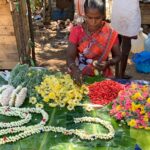
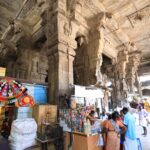
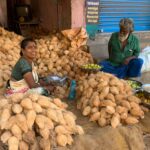
Trichy, the fourth-largest city in Tamil Nadu, is located on the Cauvery River’s banks. It was an early Cholas stronghold that was eventually conquered by the Pallavas. Built around the Rock Fort, Trichy is an excellent fusion of heritage and modernity. Along with the fort, there are a number of 1760s-era churches, institutions, and missions. The Nayaks of Madurai really built the town and its fort. Great Tamil scholars who made a significant impact on Tamil literature have come from this city. The Rock Fort Temple, a magnificent monument located on a gigantic rocky outcrop that rises abruptly from the plain to loom above the ancient city, is the most well-known landmark of this bustling town. During the British-French conflict for control of India in the 18th century, it was one of the major hubs around which the Carnatic Wars were fought. Tamil Nadu city is a booming commercial hub and is well-known for its fake jewels, cigars, handloom clothing, glass bangles, and wooden and clay toys.
You can even decide to trek to the top of Rock Fort to witness the Ganesh temple Ucchi Pillayar Koil, which was built there in the seventh century. On the ascent, there are other rock-cut temples. There are only about 340 steps left after your driver takes you halfway up. The vista is breathtaking, with Trichy extending all around and eagles circling below. Near Trichy, on an islet created by the twin rivers Cauvery and Coleroon, is the Srirangam Temple. The 156-acre complex where the massive temple is located contains seven enclosures, thick rampart walls, majestic towers, and a unique hall with 1000 pillars. The temple itself is vast in size. This temple is devoted to Ranganatha, a reclining manifestation of the Hindu deity Vishnu. It is the first of Lord Vishnu’s eight self-manifested shrines and is regarded as the most significant of the 108 primary Vishnu temples.
Then drive to Madurai from Trichy.
Spend the night in Madurai.
Day 8: Full day in Madurai
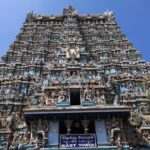
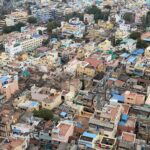
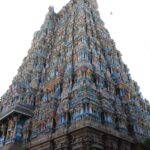
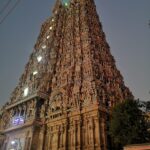
One of the rare Hindu female goddesses to have a significant temple devoted to her is the Hindu goddess Parvati, the consort of Lord Shiva, who is honored in the Meenakshi Amman Temple. The temple is one of the biggest temple complexes in Tamil Nadu and the geographic and ceremonial center of Madurai. A multitude of concentric quadrangular enclosures surrounded by tall brick walls makes up the vast temple complex. It has spectacular gopurams, shrines, a holy tank, and a number of rooms, including one with a thousand pillars. The temple comes under the list of top 30 candidates for the “New Seven Wonders of the World”.
Just across from the Meenakshi lies the Pudu Mandapam, a 17th-century temple that has been transformed into an indoor market. Visit the Tirumala Nayak Palace afterward. King Thirumalai Nayak built this 17th-century palace in 1636 AD. The Palace is a beautiful structure that beautifully blends Islamic and Dravidian architectural elements. It is renowned for the stucco work on its domes and arches.
Spend the night in Madurai.
Day 9: Travel to Munnar
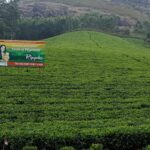
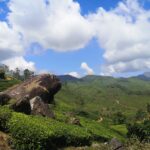
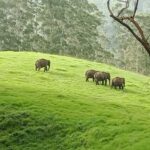
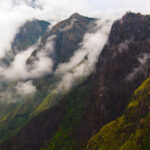
A scenic journey through the tea plantation and hills of Munnar.
The scenic village in the western Ghats of Kerala is surrounded by hills dotted with former palaces of the British Raj elite and tea plantations established in the late 19th century.
Confluence of three rivers, people belongings to three religions and tea plantations are the attraction factors.
Eravikulam National Park is home to the endangered Nilgiri Tahr.
Spend the night in Munnar
Day 10: Full day in Munnar
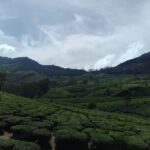

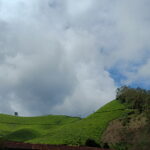
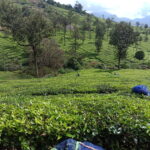
The Western Ghats’ distinctive sweeping high-altitude grasslands stand in stark contrast to the lowlands’ shoals or tropical forests. They are a distinctive feature of the mountainous region. The Eravikulam National Park, located at the foot of the Anaimudi Mountain and covering an area of 97 square kilometers, is the best-conserved portion of this breathtakingly gorgeous terrain. This summit holds the distinction of being the tallest peak south of the Himalayas, rising to a height of 2,695 meters. The summit and its surroundings make for good trekking terrain.
The park, which is located on the boundary of the states of Kerala and Tamil Nadu, was created in 1978 with the express purpose of preserving the critically endangered Nilgiri Tahr mountain goat. Approximately 3,000 tahrs live in the park now, making it the only place in the world where you may find this slate-gray goat. It lives on the rocky slopes and is unexpectedly visible up close. It is extremely nimble. In addition, the park is home to endangered Indian wild dogs called dhole packs, macaques, and leopards. The renowned kurunji, the blue flowers that unexpectedly blossom in large numbers every 12 years and turn the rocky landscape into a sea of blue, will be visible to lucky visitors.
You could opt to take a panoramic tour of the area or go to the nearby market and tea plant.
Spend the night in Munnar.
Day 11: Travel to Thekkady
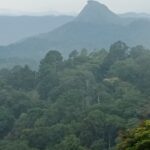
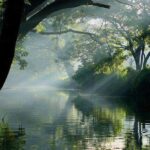
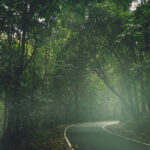
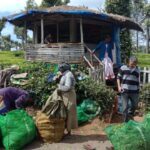
Thekkady is a small town near Periyar Tiger Reserve, a major tourist destination in Kerala and the name Thekkady is derived from the word teak as it is home to an abundance of teak trees. Eighty percent of the world’s cardamom is produced in this area at an altitude of one thousand five hundred feet above sea level.
You will visit a spice plantation after checking into your hotel so that you can learn more about the various spices growing there. The spice plantation can be explored later on an elephant safari.
In the evening you can visit the spice market through Kumali town, Jeep safari, Kathakali dance show and Elephant riding center are in the vicinity of Thekkady.
Spend the night in Thekkady
Day 12: Full day in Thekkady
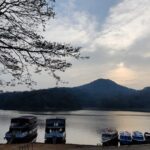

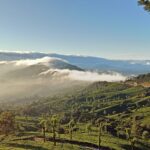
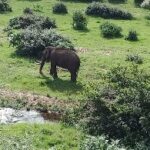
You will be taken on a three-hour hike into the forest in the morning, where you will get the chance to witness wild creatures, birds, butterflies, and beautiful scenery.
You can take a 2-hour boat tour on the Periyar lake in the afternoon to see wild creatures.
Spend the night in Thekkady.
Day 13: Travel to Kumarakom backwaters

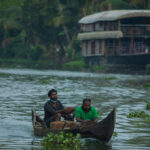

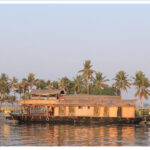
The enchanting backwater destination of Kumarakom Is a small village that is a cluster of little islands on the Vembanad lake in Kerala. Kumarakom strengthens Kerala’s reputation for being God’s own country with its unbelievable beautiful mangrove forests, coconut groves and emerald green paddy fields interspersed with enchanting waterways and canals adorned with white lillies. It is a part of Kuttanad region and the bird sanctuary here spread across 14 acres of omithologist’s paradise.This enchanting backwater destination offers visitors many leisure options. From wandering into the depth of its wild sanctuary to cruising down the backwaters and fishing, Kumarakom is perfect for a lazy and laid back holiday. The best way to watch the birds of the Kumarakom sanctuary is a boat trip round the island, as hundreds of swaying verdant coconut palms lining the rivers lean to brush the tops of your heads. Kumarakom is an example of nature at her bountiful best in the fragrant flowers, the riot of multi coloured birds, the surrounding greenery and the clear waters.
Spend the night in Kumarakom
Day 14: Travel to Alleppey Houseboat
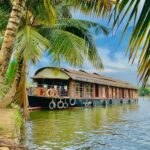

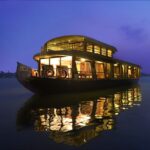
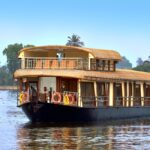
Today you will travel to Alleppey also called the “Venice of the east”. because of its canals and canals. Upon arrival, board a traditional rice boat (Houseboat) in Alleppey. The rest of the day you will take a boat trip through the famous backwaters of Kerala. A visits to this spectacular natural areas with lagoons, canals, rivers, lake with aquatic plants and narrow green island is sure to be high on your list! Enjoy your authentic Kerala lunch (included) on board. watch life on shores and admire the surroundings from the calm, majestic Vembanad Lake. you will immediately understand why the backwaters are such an attraction.
Houseboats or Kettuvallam are boats that used for trade, at down they transported goods from the interior to the cities. Today they have been converted into attractive accommodations. A houseboat trip is a fantastic way to discover the captivating beauty of the hinterland and catch a glimpse of the breathtaking rice paddies. Naturally, it is laid out at small markets and colorful hamlets to enjoy the local village life. The boat is usually made of local and environmental friendly bamboo poles, coconut ropes, bamboo mats and coconut carpets, the have neatly furnished cabins and are equipped with a professional crew who sail you through the beautiful backwaters of Kerala. The staffs also provide traditional Kerala dishes, which are served during the boat trip. You will have a great day on board.
Spend the night in houseboat
Day 15: Travel to Kochi
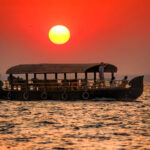
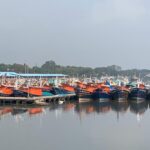

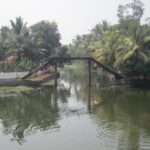
When you arrive in Kochi, you will be driven to the hotel, which is located in the old Fort Kochi neighborhood. You can stroll or unwind in the hotel. You could like to take a sunset sail in the evening. You will be transported to Kochi Harbour for this, where you can also see the harbor’s vibrant activity and the Chinese fishing nets. You can plan to watch the evening Kathakali dance performance.
Spend the night in Kochi.
Day 16: Full-day in Kochi
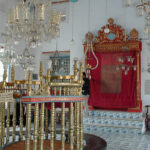
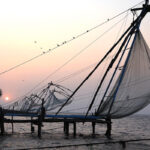
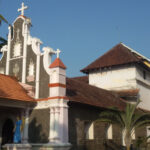

Kochi is Kerala’s most cosmopolitan city. It is also its main trading center for spices and seafood. Built around a saltwater lagoon of the Arabian Sea, Kochi is in fact a collection of narrow islands and peninsulas. While mainland Eranakulam boasts of concrete shopping malls and glitzy apartment buildings, Mattancherry and Fort Kochi have an old-world charm, with their blend of Dutch, Portuguese, and English bungalows and quaint narrow streets. The scenic location of Kochi’s natural harbor, surrounded by palm groves, green fields, inland lakes, and backwaters, has enchanted visitors from across the globe for centuries.
You might choose a stroll to take in the atmosphere, to shop, or to visit, for example, Jew Town and its synagogue, the Dutch Palace, Saint Francis Church, and the Dutch graveyard.
Spend the night in Kochi.
Day 17: Travel and drop off to Cochin International Airport

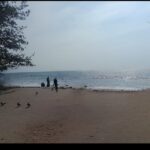
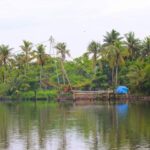
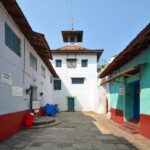
The things you do today will depend on how much time you have before your trip. The majority of our visitors decide to relax at the hotel.
Before your return flight, you will be transported to Cochin International Airport.

-
Departure/Return Location
Arrival Chennai, Departure Cochin -
Included
AC Vehicle -
Not Included
Auto RikshaBikeEntrance fees to the selected venuesHouse Boat RentKerala LunchProfessional GuideTea and Snacks
Tour Plan
Tour Plan
Tour Location

